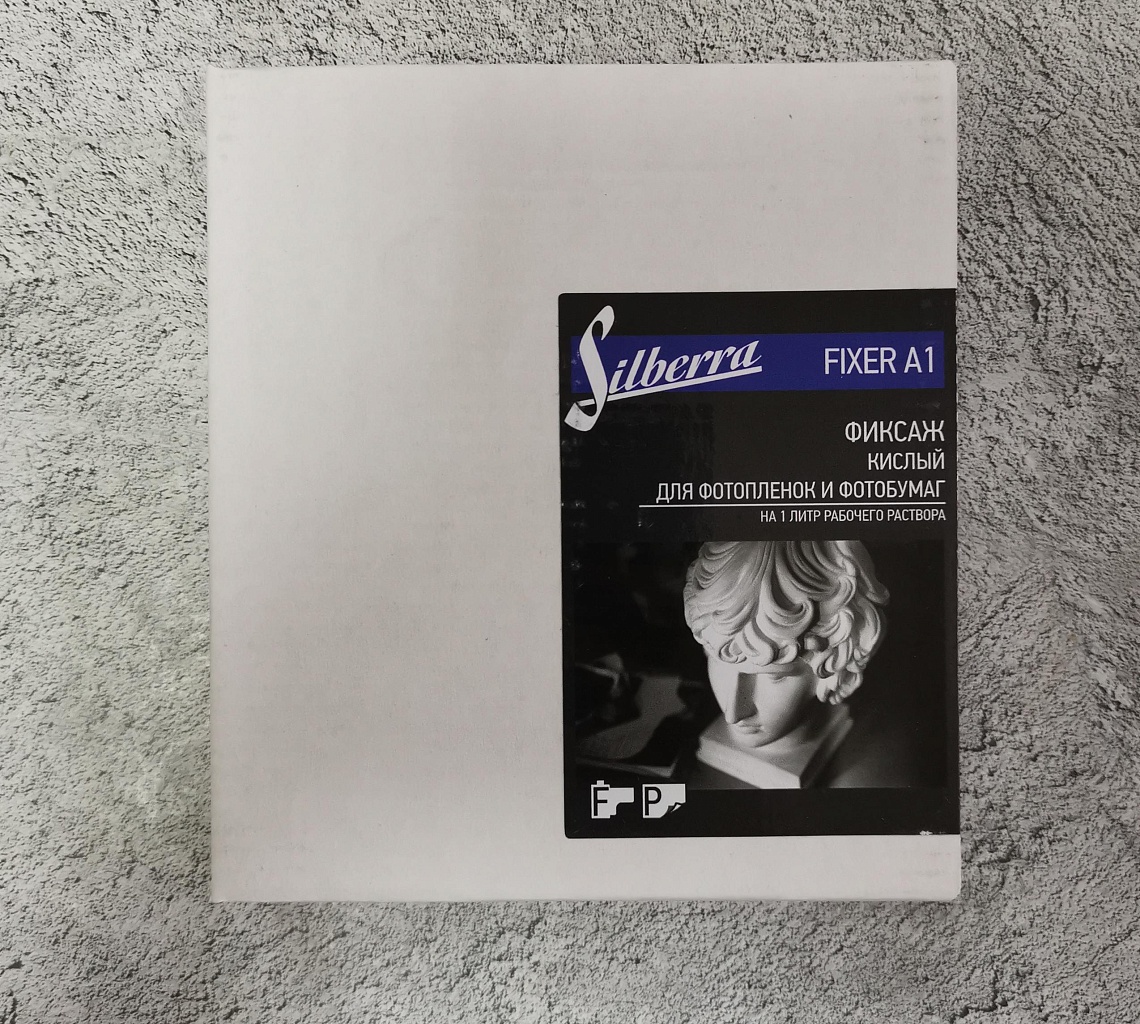polaroids@bk.ru
see the section "Contacts"
11-20 weekdays 11-20 weekends
Fixer A1 Silberra
Photochemistry for self-developing and printing photos.
Acid universal fixer for photographic films and photo paper
The Silberra FIXER A1 fixer is one of the most commonly used types of fixer in practice. It is suitable for fixing all types of photographic materials: films (including technical ones), plates, photo papers.
The use of such a fixer makes it possible to almost completely eliminate the possibility of the formation of a dichroic veil and reduces the washing time for the photographic film between the developer and the fixer: due to potassium metabisulfite, the reaction of manifestation in an acidic medium of the fixer stops almost instantly, so there is no need to apply a long-term washing or stop bath for photographic films between the developer and the fixer Silberra FIXER A1. For photo papers, a stop bath remains a desirable element of the process in any case.
The Silberra FIXER A1 fixer is one of the most commonly used types of fixer in practice. It is suitable for fixing all types of photographic materials: films (including technical ones), plates, photo papers.
The use of such a fixer makes it possible to almost completely eliminate the possibility of the formation of a dichroic veil and reduces the washing time for the photographic film between the developer and the fixer: due to potassium metabisulfite, the reaction of manifestation in an acidic medium of the fixer stops almost instantly, so there is no need to apply a long-term washing or stop bath for photographic films between the developer and the fixer Silberra FIXER A1. For photo papers, a stop bath remains a desirable element of the process in any case.
In stock: 1 pcs.
Properties
-
Composition:
Sodium thiosulfate crystalline, potassium metabisulfite
Method of preparation of the working solution
The working solution is prepared by introducing reagents into water with moderately active stirring (use only glass sticks or other inert materials to stir reagents in water!). It is recommended to use only distilled water to prepare the developer's working solution.
The procedure for preparing the working solution is as follows:
1) Heat distilled water with a volume of 400-600 ml to 55-60 degrees Celsius;
2) Introduce the contents of package No. 1 into the water, mix until completely dissolved;
3) Heat distilled water with a separate volume of 200-300 ml to 25-30 degrees Celsius;
4) Introduce the contents of package No. 2 into the water, mix until completely dissolved;
Reagents from the packages are introduced sequentially, one package after another, as soon as the contents of the previous package are dissolved. If lumps form in the solution during mixing of reagents, they should be crushed with a stick or a mixing spatula. When both solutions are ready, the solution with the contents of package No. 2 is poured into the solution with the contents of package No. 1, while constantly stirring the solutions with a glass stick. The final solution is cooled to room temperature and topped up with distilled water to 1 liter. After that, it is necessary to allow the resulting working solution to settle for at least 1 hour before its first application.
Fixing Time
The working solution of the Silberra FIXER A1 fixer with moderate agitation completes the fixing of images on photographic film in 7-12 minutes, on barite-based photo paper in 10-15 minutes, on RC photo paper in 5-7 minutes.
The optimal fixing time for any particular film should be selected based on the three-fold lightening time. The lightening time is the time during which the washed (soaked in water for several minutes) negative photographic material immersed in the fixer becomes completely transparent – the milky-cloudy color disappears, the substrate becomes transparent. To determine the clarification time, a charging tongue of the film is usually used, which is cut off from the cassette and, with the help of tweezers, is half immersed in the working solution of the fixer. Noting the lightening time by the timer, it is multiplied by 3 and the time of fixing to this film is obtained.
For photo papers, such tests are usually not carried out, relying on the nominal fixing time indicated on the fixation.
Usage Limit
The working solution of the Silberra FIXER A1 fixer with moderate agitation is able to fix up to 15 films of the 135 mm type, or up to 30-35 sheets of 18x24 cm format (or approximately 2.6 sq.m. of photo paper).
Side Effects
It is not recommended to fix both photo paper and film in the same volume of the fixer.
Storage Rules
In a dry, dark, cool place; keep away from children. Solutions should be stored in tightly sealed high-quality dishes, without air access and with a minimum amount of residual air above the solution.
Shelf Life
In powder form in original sealed bags: up to 24 months. In the form of a working solution, the Silberra Fixer A1 is stored in a closed bottle for no more than 6 months from the moment of preparation; partially used solution - no longer than 3 months.
Disposal Rules
Silberra developers and fixers are subject to disposal in accordance with the rules and regulations adopted in the country of application. Developer concentrates in liquid form are toxic (unless otherwise specified) and may harm the environment if improperly disposed of. Silberra recommends that spent developers and fixers be handed over to organizations engaged in the processing of chemical waste and having the appropriate licenses for the disposal and processing of photoreactive materials.
Featured Products

 +7 (977) 980 -58-18
+7 (977) 980 -58-18 
